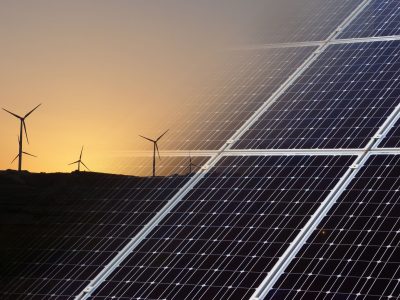
The novel coronavirus’s impact on our energy system is (understandably) not top of mind for most people right now. But the pandemic and its economic fallout have important implications for some of the most pressing energy issues today including the green transition, energy justice, and even the fate of bankrupt investor-owned utility PG&E in Northern California. As with everything else coronavirus-related, the pandemic’s impacts on energy are uncertain. However, there are a few key areas to watch.
The first is power demand. With more than 9 in 10 Americans under some kind of order to stay at home, residential electricity demand is up while industrial and commercial demand is down. In the words of one report observing similar trends in the UK, “coronavirus has turned weekdays into weekends.” This shift produces a net decrease in electricity consumption in the range of 4-8% on weekdays for states like California and New York. While declines in the single digits may not sound like much, they are enough to throw the grid out of balance if operators do not respond with care. Fortunately, most operators are well versed in maintaining reliability even under volatile conditions. Concerns now are mostly around ensuring adequate staff for grid operations (which might become especially complicated if a second wave of the virus hits during hurricane season this fall).
Declining demand is also bad news for power producers and utilities who based capital expenditures on demand projections that now look much too high. In traditionally regulated states where utility rates are set by state commissions, utilities typically earn more revenue when they sell more electricity. For utilities in these states, a drop in demand necessarily means a drop in revenue. Even in states that have “decoupled” earnings from sales volume and in restructured states where utilities charge market-based rates for their electricity, a drop in sales of this magnitude is not good news. We can expect utilities to request rate increases and other forms of financial support to compensate for their losses. The new downward pressure on demand may also accelerate conversations about changing the utility business model so that utilities rely less on sales volume for their financial well-being.
What about the generation mix? The nuclear industry is worried about maintaining sufficient staffing levels to refuel plants. Fossil-fuel industries are in panic mode as the pandemic hastens coal bankruptcies and oil prices plummet. But the renewable energy industry is also at risk. Residential solar demand is down and rooftop installer Sungevity just laid off hundreds of employees. Supply disruptions and construction delays could postpone up to 5 gigawatts of utility-scale solar development. Expect to see some good old-fashioned partisan wrangling over financial support for different segments of the energy sector as Congress debates its next stimulus package.
The news is not all bad. Many states are taking steps to protect low-income consumers by prohibiting electric utilities from shutting off customers’ electricity due to non-payment of bills. Utilities in other areas have adopted this policy voluntarily. Most utilities are also waiving late fees during this period. These policies are crucial. Low-income customers are energy burdened under normal conditions (meaning that they spend a higher percentage of household income on their energy bills). That burden is only growing as customers face the twin threat of lower wages and higher energy bills due to increased domestic use. Some states have funds to help low-income customers with their bills, but those funds are not infinite.
Finally, the pandemic recently induced California Governor Gavin Newsom to back a crucial element of struggling northern California utility PG&E’s plan to emerge from bankruptcy by the end of June. Governor Newsom had opposed PG&E’s plan to raise $23 million in financing due to concerns about the utility’s ability to raise future funds needed to modernize their grid and prevent additional wildfire disasters. However, he dropped his opposition in light of the pandemic’s predicted economic impacts. U.S. Bankruptcy Court Judge Dennis Montali subsequently approved PG&E’s financing request.
Meanwhile, as most Californians shelter in place, essential workers for PG&E and its counterparts Southern California Edison and San Diego Gas & Electric Co. continue wildfire mitigation projects in anticipation of the 2020/2021 wildfire season. It’s a sobering reminder that other threats continue to loom even as the pandemic occupies the majority of society’s time and attention.
Sharon Jacobs is an Associate Professor at the University of Colorado Law School in Boulder, Colorado.
The post Guest Blogger Sharon Jacobs: The Coronavirus and Our Energy System appeared first on Legal Planet.
By: Guest Contributor
Title: Guest Blogger Sharon Jacobs: The Coronavirus and Our Energy System
Sourced From: legal-planet.org/2020/04/15/guest-blogger-sharon-jacobs-the-coronavirus-and-our-energy-system/
Published Date: Wed, 15 Apr 2020 17:21:37 +0000
Vist Maida on Social Me
Website Links
Maida Law Firm - Auto Accident Attorneys of Houston, by fuseology
PRESS RELEASE COVID-19 UPDATES
http://www.kake.com/story/41966303/covid19-maida-law-firm-is-open-and-fully-operational-during-this-crisis
https://legal-planet.org/wp-content/uploads/2020/04/freestockphotos-36301556078353kf0mw69ja01-400x300.jpg

No comments:
Post a Comment